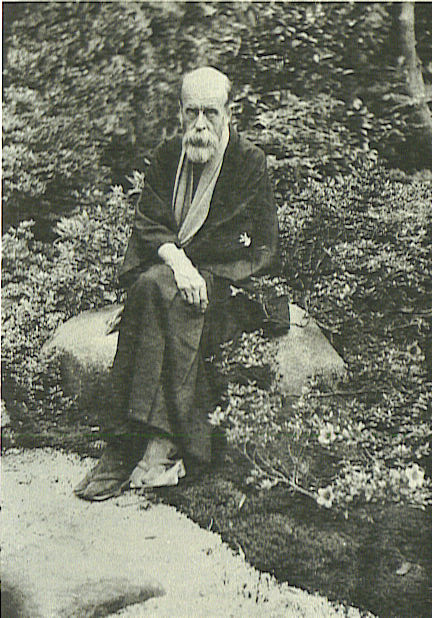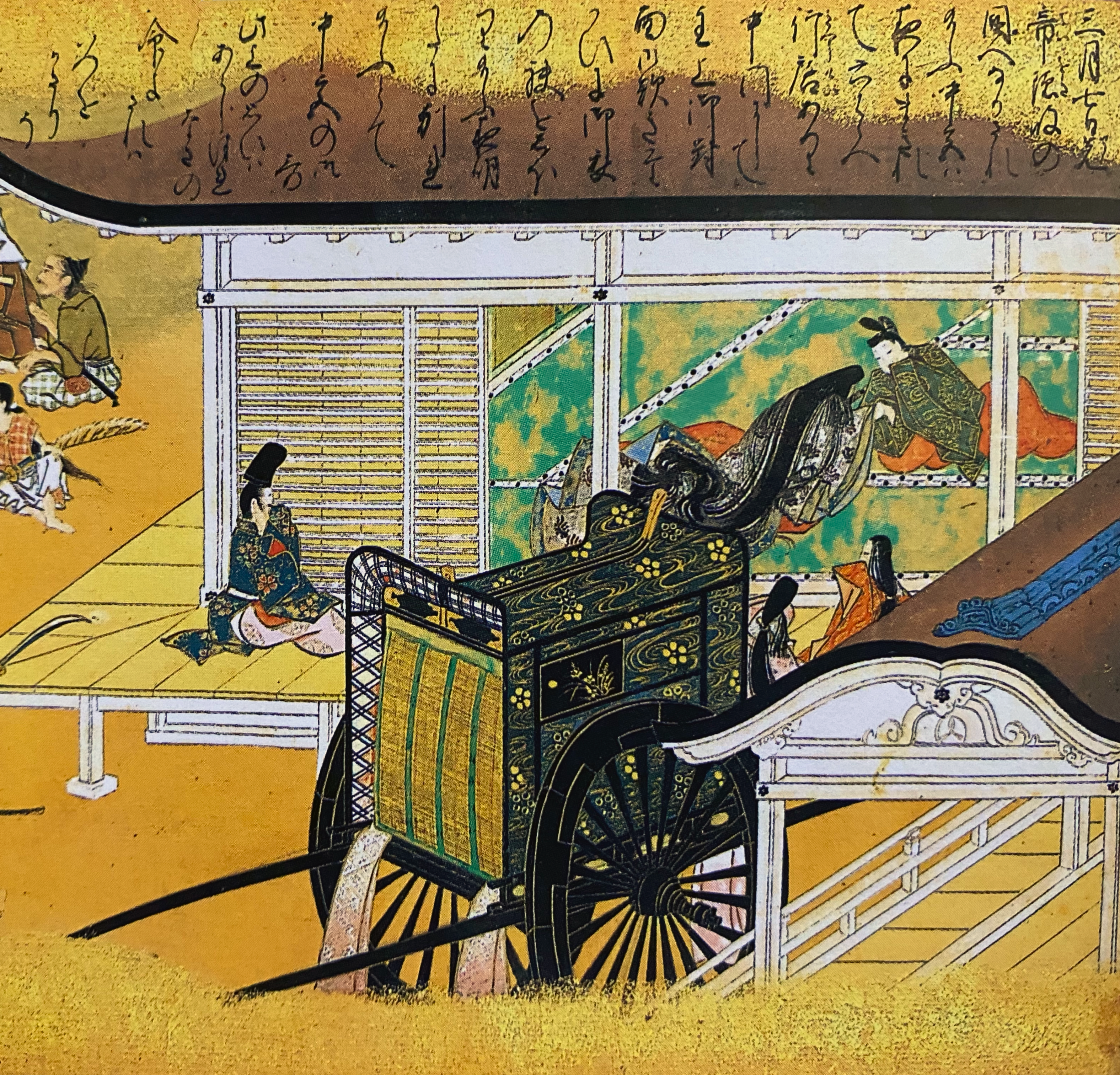|
Emperor Go-Daigo
Emperor Go-Daigo (後醍醐天皇 ''Go-Daigo-tennō'') (26 November 1288 – 19 September 1339) was the 96th emperor of Japan,Imperial Household Agency (''Kunaichō'')後醍醐天皇 (96) retrieved 2013-8-28. according to the traditional order of succession. He successfully overthrew the Kamakura shogunate in 1333 and established the short-lived Kenmu Restoration to bring the Imperial House back into power. This was to be the last time the emperor had real power until the Meiji Restoration in 1868.Sansom 1977: 22–42. The Kenmu restoration was in turn overthrown by Ashikaga Takauji in 1336, ushering in the Ashikaga shogunate. The overthrow split the imperial family into two opposing factions between the Ashikaga backed Northern Court situated in Kyoto and the Southern Court based in Yoshino. The Southern Court was led by Go-Daigo and his later successors. Biography Before his ascension to the Chrysanthemum Throne, his personal name (''imina'') was Takaharu''-shinnō'' (� ... [...More Info...] [...Related Items...] OR: [Wikipedia] [Google] [Baidu] |
Emperor Of Japan
The emperor of Japan is the hereditary monarch and head of state of Japan. The emperor is defined by the Constitution of Japan as the symbol of the Japanese state and the unity of the Japanese people, his position deriving from "the will of the people with whom resides sovereign power". The Imperial Household Law governs the line of Succession to the Japanese throne, imperial succession. Pursuant to his constitutional role as a national symbol, and in accordance with rulings by the Supreme Court of Japan, the emperor is personally sovereign immunity, immune from prosecution. By virtue of his position as the head of the Imperial House of Japan, Imperial House, the emperor is also recognized as the head of the Shinto religion, which holds him to be the direct descendant of the sun goddess Amaterasu. According to tradition, the office of emperor was created in the 7th century BC, but the first historically verifiable emperors appear around the 5th or 6th centuries Anno Domini, AD ... [...More Info...] [...Related Items...] OR: [Wikipedia] [Google] [Baidu] |
Prince Kaneyoshi
Prince Kaneyoshi (懐良親王, ''Kaneyoshi shinnō'' or ''Kanenaga shinnō''; born c. 1329 – 30 April 1383) was a nobleman of the Kamakura period and the early Nanboku-chō period where power in Japan was split between two rival factions. He was the son of Emperor Go-Daigo who was head of one of the factions (the Southern Court), the other being the Ashikaga shogunate. During his childhood, he saw the shogunate establishing its rule over the island. Later in the 1350s, a civil war occurred between the founder of the shogunate, Ashikaga Takauji and his son, Tadafuyu. When it ended, Kaneyoshi became an effective force of the Southern Court in opposition to the Ashikaga ''bakufu''. In 1336, Go-Daigo sent the prince, at seven years of age, to Kyushu as ''Chinzei Shogun'' (Commander-in-Chief of the Western Defense Area). However, unfortunately for the Southern Court and Kaneyoshi, by 1358 the current shogun Yoshiakira faced no immediate threat from the Southern Court's loyalis ... [...More Info...] [...Related Items...] OR: [Wikipedia] [Google] [Baidu] |
Kenmu Restoration
The was a three-year period of Imperial rule in Japanese history between the Kamakura period and the Muromachi period from 1333 to 1336. The Kenmu Restoration was an effort made by Emperor Go-Daigo to overthrow the ruling Kamakura Shogunate (''de facto'' ruled by Hōjō clan) and restore the Imperial House to power in Japan, returning to civilian government after 148 years of '' de facto'' military government from Kamakura.Sansom 1977: 22-42. Go-Daigo launched the Genkō War in 1331 against the Kamakura Shogunate but was defeated and forced to exile to the Oki Islands. Go-Daigo launched a second uprising, and with the assistance of the defected Kamakura general Ashikaga Takauji and rebel leader Nitta Yoshisada, defeated the Kamakura Shogunate at the siege of Kamakura in 1333. The Imperial House was restored to power but Go-Daigo's policies failed to satisfy his major ''samurai'' supporters and most Japanese people. The Kenmu Restoration was ultimately overthrown when Taka ... [...More Info...] [...Related Items...] OR: [Wikipedia] [Google] [Baidu] |
Genkō War
The , also known as the , was a civil war fought in Japan between the Emperor Go-Daigo and the Kamakura Shogunate from 1331 to 1333. The Genkō War was named after Genkō, the Japanese era corresponding to the period of 1331 to 1334 when the war occurred. Background Go-Daigo became Emperor of Japan in 1318 and sought to remove the Kamakura Shogunate, which had ruled Japan as a '' de facto'' military government from the city of Kamakura since the Genpei War in 1185, and restore power to civilian government under the Imperial House in Kyoto. The Kamakura Shogunate was indirectly ruled by the Hōjō clan as ''shikken'' – the regents of the ''Shōgun'' – and actively blocked the Emperor's manoeuvres to restore Imperial rule. Conflict First uprising In 1331, Go-Daigo plotted to seize power through force and overthrow the Kamakura Shogunate by encouraging his vassals and other anti-Hōjō ''samurai'' to rebel. However, Go-Daigo was betrayed when his trusted adviser Fujiwara Sad ... [...More Info...] [...Related Items...] OR: [Wikipedia] [Google] [Baidu] |
Richard Ponsonby-Fane
Richard Arthur Brabazon Ponsonby-Fane (8 January 1878 – 10 December 1937) was a British academic, author, specialist of Shinto and Japanologist. Early years Richard Arthur Brabazon Ponsonby was born at Gravesend, Kent, Gravesend on the south bank of the Thames in Kent, England to John Ponsonby-Fane, John Henry and Florence Ponsonby. His boyhood was spent in the family home in London and at the Somerset country home, Brympton d'Evercy, of his grandfather, Spencer Ponsonby-Fane."A Biographical sketch of Dr. R. Ponsonby-Fane," ''Studies in Shinto and Shrines,'' p. 517. Ponsonby was educated at Harrow School. He added "Fane" to his own name when he inherited Brympton d'Evercy in 1916 after the deaths of both his grandfather and father. Career In 1896, Ponsonby traveled to Cape Town to serve as Private Secretary to the British Cape Colony, Governor of the British Cape Colony.Ponsonby-Fane, p. 518. For the next two decades, his career in the British Empire's colonial governments ... [...More Info...] [...Related Items...] OR: [Wikipedia] [Google] [Baidu] |
Imperial Household Agency
The (IHA) is an agency of the government of Japan in charge of state matters concerning the Imperial House of Japan, Imperial Family, and the keeping of the Privy Seal of Japan, Privy Seal and State Seal of Japan. From around the 8th century AD until the Second World War, it was known as the . The Agency is unique among conventional government agencies and ministries in that it does not directly report to the Prime Minister of Japan, Prime Minister at the cabinet level, nor is it affected by legislation that establishes it as an Independent Administrative Institution. Organization and functions The Imperial Household Agency is headed by its director-general, assisted by the deputy director, appointed by the Cabinet.Imperial Household AgencyOrganization/ref> Its main organizational positions are: * the Grand Steward's Secretariat * the Board of Chamberlains * the Crown Prince's Household * the Board of Ceremonies * the Archives and Mausolea Department * the Maintenance and W ... [...More Info...] [...Related Items...] OR: [Wikipedia] [Google] [Baidu] |
Emperor Of Japan
The emperor of Japan is the hereditary monarch and head of state of Japan. The emperor is defined by the Constitution of Japan as the symbol of the Japanese state and the unity of the Japanese people, his position deriving from "the will of the people with whom resides sovereign power". The Imperial Household Law governs the line of Succession to the Japanese throne, imperial succession. Pursuant to his constitutional role as a national symbol, and in accordance with rulings by the Supreme Court of Japan, the emperor is personally sovereign immunity, immune from prosecution. By virtue of his position as the head of the Imperial House of Japan, Imperial House, the emperor is also recognized as the head of the Shinto religion, which holds him to be the direct descendant of the sun goddess Amaterasu. According to tradition, the office of emperor was created in the 7th century BC, but the first historically verifiable emperors appear around the 5th or 6th centuries Anno Domini, AD ... [...More Info...] [...Related Items...] OR: [Wikipedia] [Google] [Baidu] |
Go-Daigo Takaharu
Emperor Go-Daigo (後醍醐天皇 ''Go-Daigo-tennō'') (26 November 1288 – 19 September 1339) was the 96th emperor of Japan,Imperial Household Agency (''Kunaichō'')後醍醐天皇 (96) retrieved 2013-8-28. according to the traditional order of succession. He successfully overthrew the Kamakura shogunate in 1333 and established the short-lived Kenmu Restoration to bring the Imperial House back into power. This was to be the last time the emperor had real power until the Meiji Restoration in 1868.Sansom 1977: 22–42. The Kenmu restoration was in turn overthrown by Ashikaga Takauji in 1336, ushering in the Ashikaga shogunate. The overthrow split the imperial family into two opposing factions between the Ashikaga backed Northern Court situated in Kyoto and the Southern Court based in Yoshino. The Southern Court was led by Go-Daigo and his later successors. Biography Before his ascension to the Chrysanthemum Throne, his personal name (''imina'') was Takaharu''-shinnō'' (尊� ... [...More Info...] [...Related Items...] OR: [Wikipedia] [Google] [Baidu] |
Nara, Nara
is the capital city of Nara Prefecture, Japan. , Nara has an estimated population of 367,353 according to World Population Review, making it the largest city in Nara Prefecture and sixth-largest in the Kansai region of Honshu. Nara is a core city located in the northern part of Nara Prefecture bordering the Kyoto Prefecture. Nara was the capital of Japan during the Nara period from 710 to 784 as the seat of the Emperor before the capital was moved to Nagaoka-kyō, except for the years 740 to 745, when the capital was placed in Kuni-kyō, Naniwa-kyō and Shigaraki Palace. Nara is home to eight major historic temples, shrines, and heritage sites, specifically Tōdai-ji, Saidai-ji, Kōfuku-ji, Kasuga Shrine, Gangō-ji, Yakushi-ji, Tōshōdai-ji, and the Heijō Palace, together with Kasugayama Primeval Forest, collectively form the Historic Monuments of Ancient Nara, a UNESCO World Heritage Site. Etymology By the Heian period, a variety of different characters had ... [...More Info...] [...Related Items...] OR: [Wikipedia] [Google] [Baidu] |
Kamakura Shogunate
The was the feudal military government of Japan during the Kamakura period from 1185 to 1333. Nussbaum, Louis-Frédéric. (2005)"''Kamakura-jidai''"in ''Japan Encyclopedia'', p. 459. The Kamakura shogunate was established by Minamoto no Yoritomo after victory in the Genpei War and appointing himself as ''shōgun''. Yoritomo governed Japan as military dictator from the eastern city of Kamakura with the emperor of Japan and his Imperial Court in the official capital city of Heian-kyō (Kyoto) as figureheads. The Kamakura ''shōguns'' were members of the Minamoto clan until 1226, the Fujiwara clan until 1252, and the last six were minor princes of the imperial family.Nussbaum"Minamoto"at pp. 632–633. The Hōjō clan were the '' de facto'' rulers of Japan as '' shikken'' (regent) of the ''shōgun'' from 1203.Nussbaum"Fujiwara"at pp. 200–201. The Kamakura shogunate saw the Jōkyū War in 1221 and the Mongol invasions of Japan under Kublai Khan in 1274 and 1281. The Kamaku ... [...More Info...] [...Related Items...] OR: [Wikipedia] [Google] [Baidu] |






